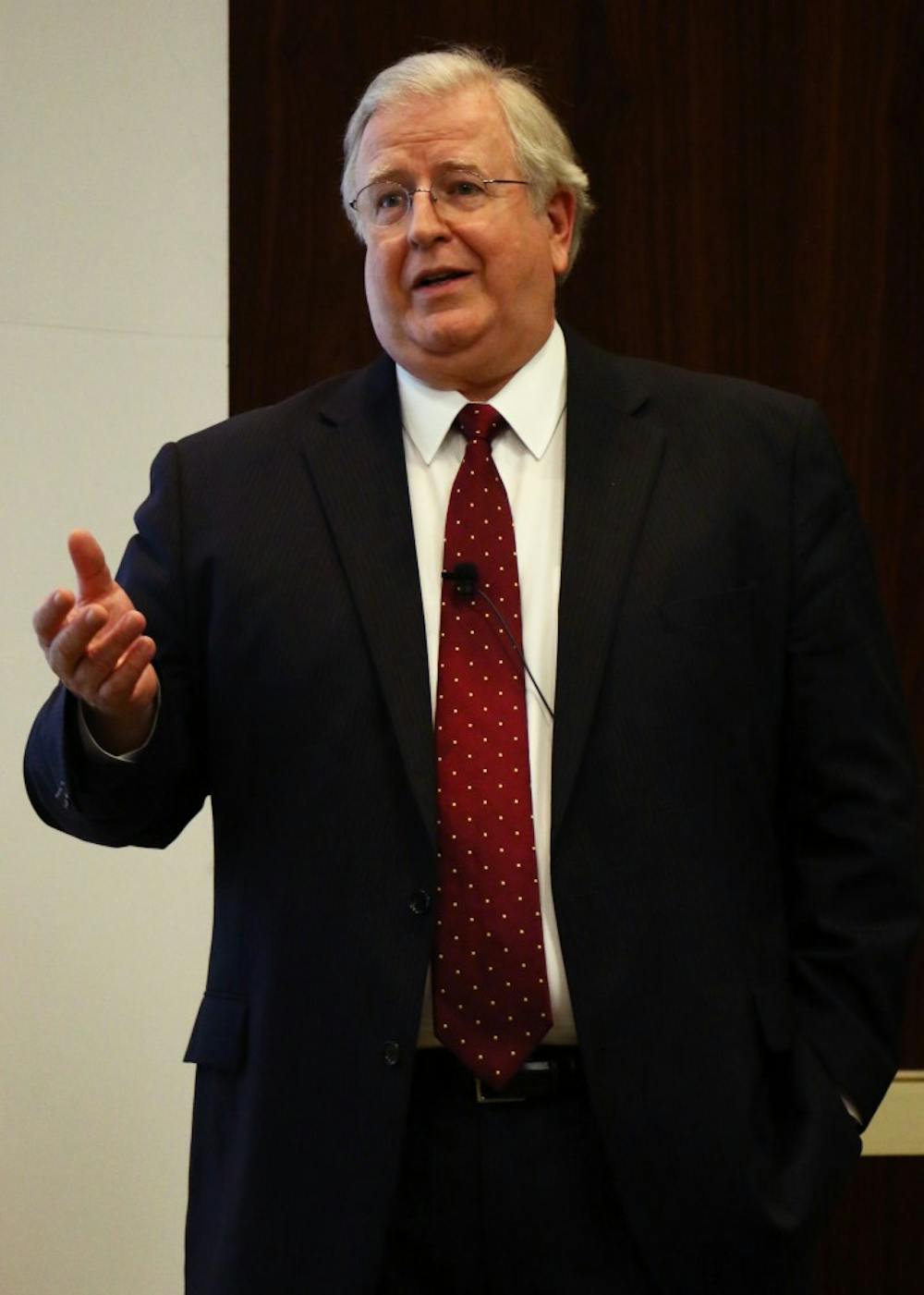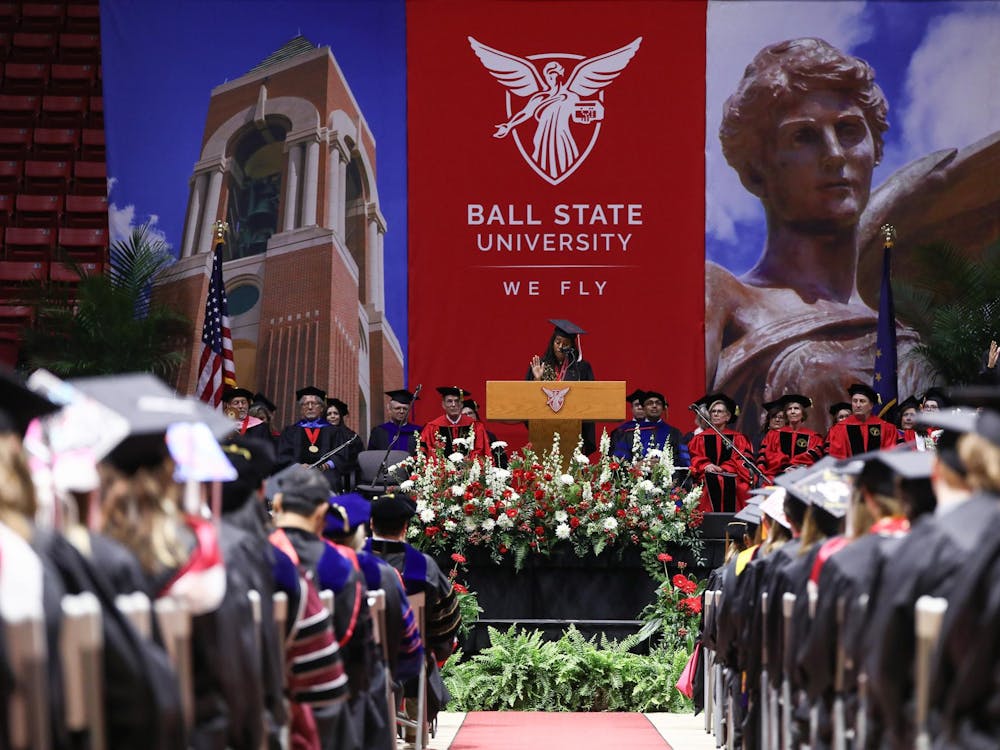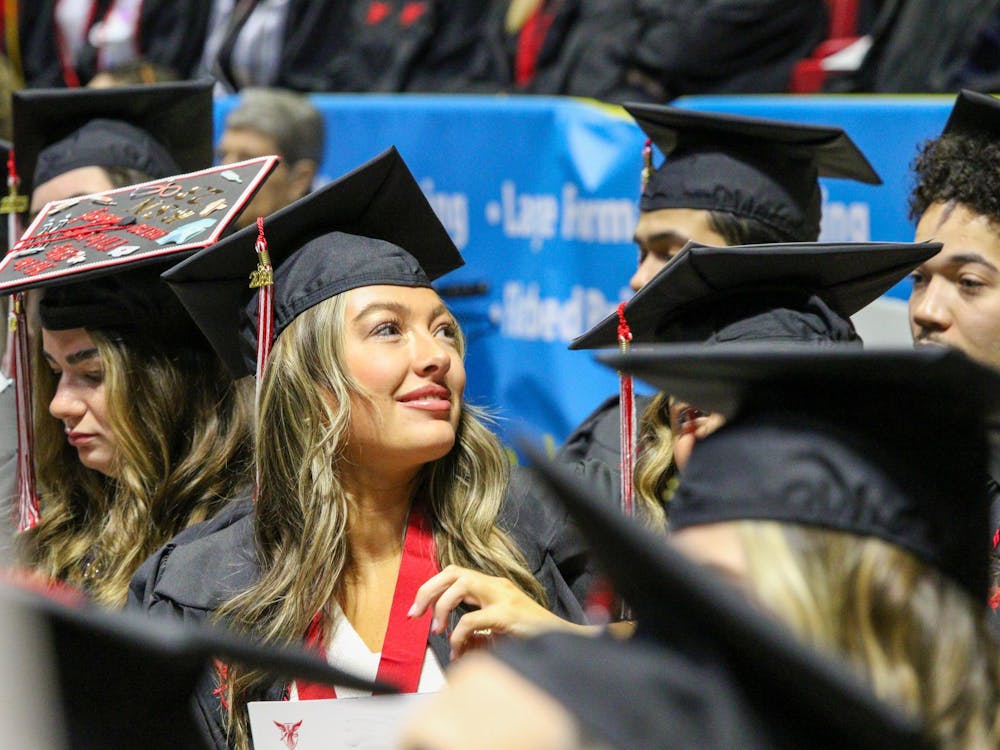Unmanned Aircraft Vehicles facts
-Federal Aviation Administration first authorized use of unmanned aircraft in 1990.
-The FAA has limited its use missions such as disaster relief, search and rescue, firefighting and border patrol.
-Recreational use of a model aircraft, or UAV, is limited to below 400 feet above ground level.
SOURCE: faa.gov
• Drones have been seen by some as way to infringe on individual’s privacy.
• UAV’s could be used as a more accurate and speedy way to gather information.
• Speaker calls for ethical use of drones to avoid overstepping boundaries.
Drones are one of many emerging technologies some say threaten citizen’s personal privacy. Gene Policinski, chief operating officer of the Newseum Institute, spoke Tuesday in defense of the “misunderstood” technology.
Unmanned aerial vehicles, commonly known as drones, are an emerging technology which journalists can use as new form of storytelling.
Policinski spoke Tuesday night about the effective uses of drones, not only for journalists but for police and military applications as well.
One of the first things Policinski said should change about the devices is the name. He said when people hear the word “drones,” they are frightened because of the predatory way the military uses it.
“As journalists we must be engaged in new technology and speak up for ourselves,” Policinski said. “[The public] fears new technology.”
Drones can provide a more accurate and speedy way to gather information and make it known to the public.
Policinski said the public will benefit by the way journalists are beginning to use drones and, although it may be unpopular with some, there is no reason not to allow journalists to use them.
Journalists could use drones to cover protests, rallies, marches and other major events more accurately. Drones also allow police to cover crimes and traffic accidents with a quicker response time while simultaneously lowering risk for officers.
While many people are concerned about privacy invasions, Policinski said drone users should adhere to a set of ethics when using the new technology.
“We must think in ways to convince ourselves to limit our own actions, not because of legal action or financial loss, but because it’s the right thing to do,” he said.
Some students in attendance of the lecture said they left with a better understanding of drone journalism.
“I am more comfortable about the idea after the presentation,” said Lauren Dahlhauser, a junior photojournalism major. “I first had the mindset that they were intrusion and invasive, but from the perspective of a journalist I can see how they would be a benefit.”
Junior public relations major David Vander does not feel comfortable with the ideas of drones, even after Policinski’s presentation.
He said he was afraid of the slippery slope between using drones for purposes that are for the public good and using them to spy on citizens.
“I think if it’s okay for journalists to use it, then the government can take control and use the technology to monitor what everyone else is doing,” he said. “We barely have enough privacy as it is.”





